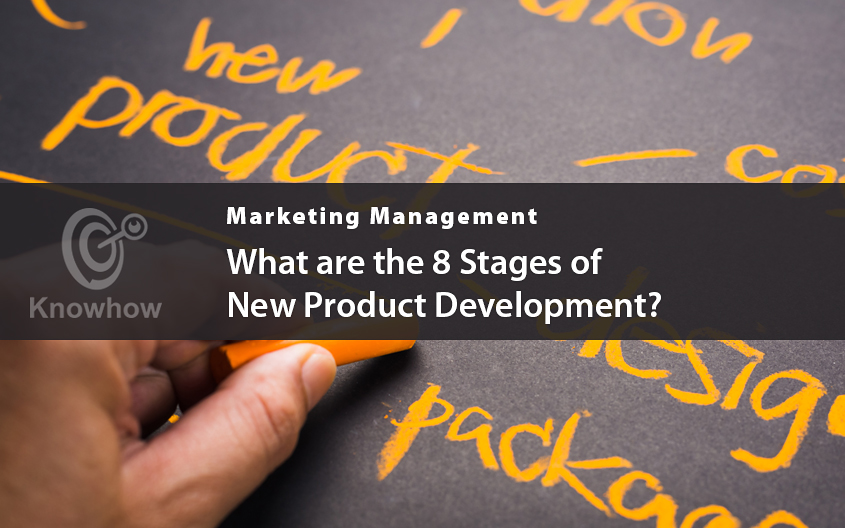
The Product Development Process – Developing New Market Offerings
When it comes to marketing, the process is clear. Companies start by deciding on the market they want to use, then they focus on the segment, and lastly, they focus on customers. From there, they can begin developing new products. Those products can be evolutions of older ones or entirely new offerings.
The variety of product offerings is increasing with each passing year. The main reason for that is the fact that consumers are developing their tastes at an increasing rate. So companies have to be able to churn out new products to meet the demand. If they fail to do so, they might start failing in the profit department.
Unlike in the previous decades, nowadays, the competition is not the only threat to a company. The increasing consumer needs and short product life cycles can be incredibly hazardous as well. The constant demand for new products is leading to an incredible failure rate. Namely, 19 out of 20 products launched in the USA fail rather quickly. And in Europe, the situation is just slightly better with 2 new products out of 20 making it.
The setup of the organisation has to support the development of new products. The companies at the forefront of the game have to allocate resources for the needs of their research and development teams. One of the most popular ways to do so is by allocating a percentage of sales revenue. That way, the company’s development efficiency grows with the company.
Some companies also offer their employees to use a certain amount of time during their workdays on a new product development strategy. But simply encouraging development might not be enough. Companies have to organise their development processes.
Most companies tend to utilise these 8 stages of new product development process:
1. Idea Generation
The inception of every new product starts with an idea. And to generate the ideas, companies can focus on customer demands and needs. Alternatively, they can also focus on analysing the choices of their competitors. Understanding why the products of the competitors are selling well can increase the odds of success for any new products that a company launches. Lastly, some companies turn to creative minds in the upper management for ideas. One of the most famous new product development examples would be the products developed by the late Steve Jobs of Apple. Steve Jobs was famous for steering his company through new product developments (i.e. iPod, Macbook, iPhone, etc.) with incredible success.
2. Idea Screening
Not every idea is suitable to become a product. For that reason, companies have to screen the ideas. Companies can label an idea as promising and act on it, marginal and try to improve it, or simply poor and reject it. It is also very important for companies to avoid any bias related to the source of the idea. So even if someone like Steve Jobs pitches an idea, the company should still be very careful with it.
3. Product Development Process
During the third stage of product development, the product idea grows into multiple concepts. Companies will repeat the screening process to choose the best of them and pit them against each other. Most companies will introduce their concepts to focus groups and analyse their reactions. The products that do the best in front of the focus groups or test consumers go into development.
4. Marketing Strategy
Once a company decides on the product, they will have to spend time developing a marketing strategy for it. Experts will evaluate the size of the market, demand for the product, and revenue estimates. The marketing team will get a budget for their efforts and they can select distribution channels.
5. Business Model
The development of a business model works very similarly to the development of a marketing strategy. The experts in the company will estimate the costs and profits and manage the potential of the product. Also, they will estimate the economic feasibility of the new product.
6. Manufacture
One of the last stages of product development is where production finally begins. The company will make multiple prototypes and choose on which designs get to go to the next stage. Also, the company will, once again, perform a cost analysis to see if it matches the estimates. And if the costs go above the higher-end estimates, the company might abandon the project.
7. Branding
Once the company finally has a physical product in their hands, the marketing team can get to work. For starters, they can develop the brand name, packaging, and the marketing message behind the product. They will also determine the price of the product.
8. Product Launch
The last stage of new product development is the commercialisation phase. The product is launched, and it is followed by a developed marketing strategy in order to maximise its earning potential.
Related content:
Marketing Management Knowhow – learn more about marketing with our collection of educational articles.
The basics of new product development stages are in the sections above. However, if you want to find out even more, you can give us a call at 0800 0148 970 or simply email us today. We can talk about any topic related to product development and help you find your way around it all.
From corporate custom pens, canvas bags, printed umbrellas, printed logo mugs, branded water bottles, through to promo clothing, logo notebooks, novelty gifts and coasters, here at GoPromotional we believe that you are sure to find the perfect company logo branded products to help successfully market your brand.






